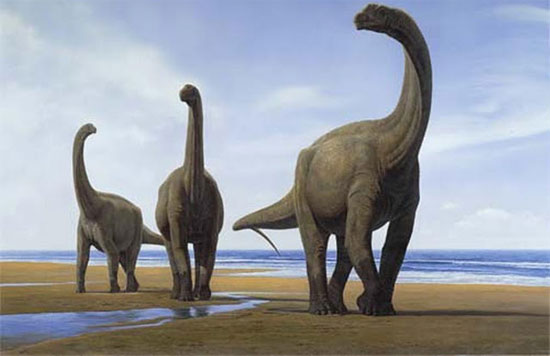New discovery: Dinosaurs also have a mechanism to replace teeth
While modern species still have a lot of headaches for dental problems, Earth-dwelling dinosaurs 150 million years ago knew how to handle broken teeth, that is, to grow teeth. new.

Sketch of Camarasaurus dinosaurs.(Source: dinosaurs.wikia.com)
American scientists analyzed fossil samples from two of the largest herbivore dinosaurs that once lived in North America, Diplodocus and Camarasaurus, and found that these two species replaced every six months.
Expert Michael D'Emic from Stony Brook University (USA) said the herbivorous lizard also has an even shorter tooth replacement cycle, about 1-2 months / time.
This mechanism is similar to the change of teeth in humans, but experts discovered in dinosaurs in every cavity there is more than one reserve tooth. Camarasaurus has a maximum of 3 "baby teeth" stored in each tooth cavity and alternately after every 62 days. And Diplodocus has up to 5 replaceable reserve teeth and 35 days of tooth replacement.
According to scientists, this is a herbivorous dinosaur self-defense mechanism because these species consume huge amounts of daily food, and chew on hard plants that often erode and crack their teeth. them. From this, it can be seen that the previous dinosaurs prioritized "more quantity than quality" teeth, in contrast to today's mammals that tend to develop sharper and firmer teeth.
- Detecting the first individual cavities dinosaurs
- The teeth of dinosaurs resemble horse teeth
- Dinosaurs also migrate
- The teeth of tyrannical dinosaurs confuse the scientific world
- 10 rules to brush teeth need to know
- Teething helps piranhas eat everything
- A discovery that shocked Japanese archaeological circles
- Discover dinosaurs 'armored' never known
- New discovery about drug addiction
- The predatory dinosaur has four wings
- 10 weird, hard to imagine dinosaurs
- What flavor does the dinosaur meat taste good or not?
 Discovered an ancient centipede fossil 99 million years old
Discovered an ancient centipede fossil 99 million years old Discovered bat-like dinosaurs in China
Discovered bat-like dinosaurs in China Discovered a 200-year-old bronze cannon of the coast
Discovered a 200-year-old bronze cannon of the coast Discover 305 million-year-old spider fossils
Discover 305 million-year-old spider fossils